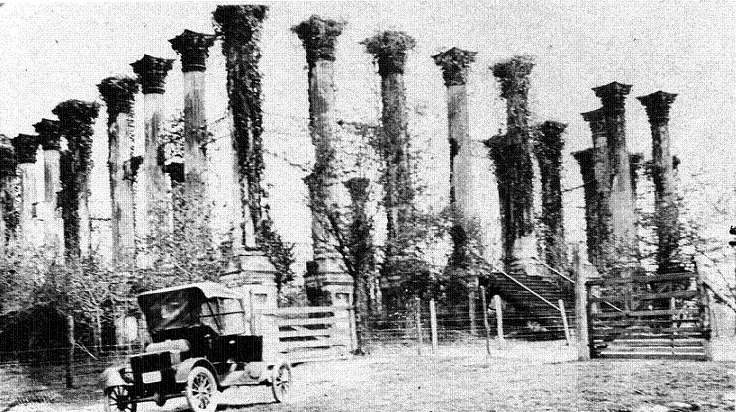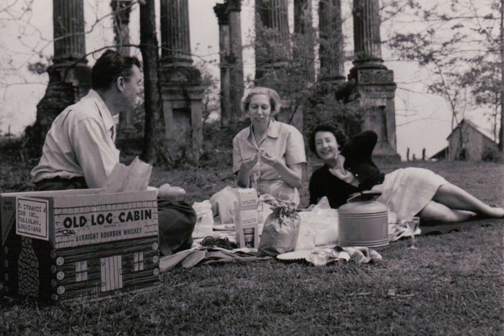Momentary serenity and happiness are upended in Welty’s “Asphodel,” a humorous picnic story in which three old maids are frightened by the appearance of a naked man.
Cora, Irene, and Phoebe plan a picnic at Asphodel, the former home of their recently deceased dear friend Miss Sabina. They are unaware that the name Asphodel alludes to a wildflower associated with Hades. They presume their picnic will be dedicated to the memory of Miss Sabina. But Welty suggests this is a symbolic journey to Hades as they follow a narrow path across a shallow creek, signifying the River Styx, to the ruined mansion.
Arriving, they unpack their picnic on the rank grass below the steps of Asphodel. It’s a feast for a village: “aromatic ham and chicken, spices and jellies, fresh bread and a cake, peaches, bananas, figs, pomegranates, grapes, and a thin dark bottle of blackberry cordial.”
Settled, they retell Sabina’s history of refusing to live at Asphodel because of the outrageous behavior of her “profane” husband, Mr. Don McInnis, whose cruelty (no one is sure of what) repeeled Sabina. Neither do they know what McInnis did to provoke Sabina, nor have they questioned Sabina’s story. Because the mansion was long ago ruined by fire, Cora, Irene, and Phoebe also figure it is uninhabited, and McInnis is long gone or dead.
The picnic is an expression of long-repressed curiosity, and they intend to enjoy a perfect day with their golden memories of Sabina. Their moment of perfection does not last. The picnic is turned topsy-turvy when McInnis, naked and bearded, appears standing framed by six golden Doric columns! He appears lion-like but seems most like Dionysus.

Courtesy of the Mississippi Department of Archives and History.
At once, the golden day darkens. Astonished, the old maids jump; “the white picnic cloth seemed to have stirred of itself and spilled out the half-eaten fruit and shattered the bottle of wine as the three old maids first knelt, then stood, and with a cry clung their arms upon one another.”
Running helter-skelter and chased by a herd of billy-goats, animals closely associated with Dionysus. They re-cross the stream, frantically leap into their wagon and rush off. Cora drives, standing as if in a chariot. “We escaped,” she says. “I’m thankful Miss Sabine didn’t live to see us then,” Irene chimes in. But Phoebe laughs. Still seeing the day as a celebration, she blots out the fright and remembers that it was a “golden day” for a picnic.
Featured Image: In “Some Note on River Country” (1944), Welty intimates that Windsor Plantation is the model for “Asphodel.”
See Eudora Welty. “Asphodel” was first published in The Wide Net and Other Stories (1942); Eudora Welty: Stories, Essays & Memoir. Richard Ford and Michael Kreyling, Eds. New York: The Library of America, 1998; Steve Reece. ” Homer’s Asphodel Meadow. Greek, Roman, and Byzantine Studies. 47 (2007) 389–400

